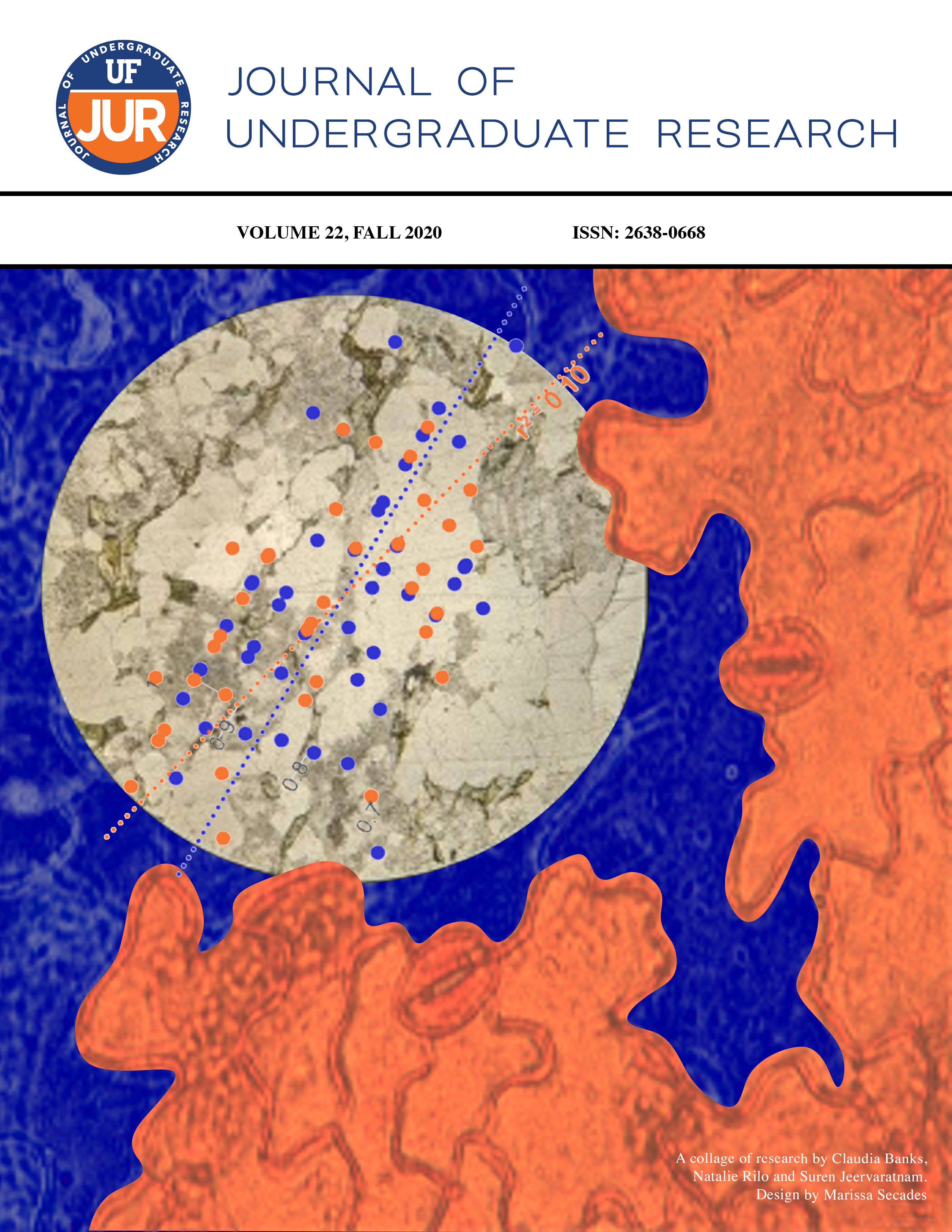Effects of the Invasive Little Fire Ant (Wasmannia auropunctata) on Ant Community Composition on UF Campus
DOI:
https://doi.org/10.32473/ufjur.v22i0.121745Keywords:
invasive ants, community composition, species richnessAbstract
Invasive species are a serious threat to Florida’s native ecosystems and can have significant economic impacts. The invasive little fire ant (Wasmannia auropunctata) was first observed on the University of Florida’s campus in the Field and Fork Gardens in Summer 2018 and a targeted eradication of this population began in Fall 2018. This project aimed to compare ant community composition in invaded and uninvaded areas to better understand how ant invasions affect native ant communities. For comparison with Field and Fork Gardens invaded sites, four additional sites on UF’s campus were surveyed for ants through leaf litter sampling. Samples were sorted and all ants identified to the genus level; samples from invaded sites were identified to species. In samples from invaded sites, the community had lower species richness and a lower relative abundance of ant species compared to uninvaded communities. Determining how the invasion of the little fire ant affects ant communities is important as invasive ants do not fill the same ecosystem roles as native ants, such as seed dispersal and mutualist interactions. Data on community composition in uninvaded areas could be useful in efforts to restore a site after eradication has been achieved.
Downloads
Published
Issue
Section
License
Some journals stipulate that submitted articles cannot be under consideration for publication or published in another journal. The student-author and mentor have the option of determining which journal the paper will be submitted to first. UF JUR accepts papers that have been published in other journals or might be published in the future. It is the responsibility of the student-author and mentor to determine whether another journal will accept a paper that has been published in UF JUR.

